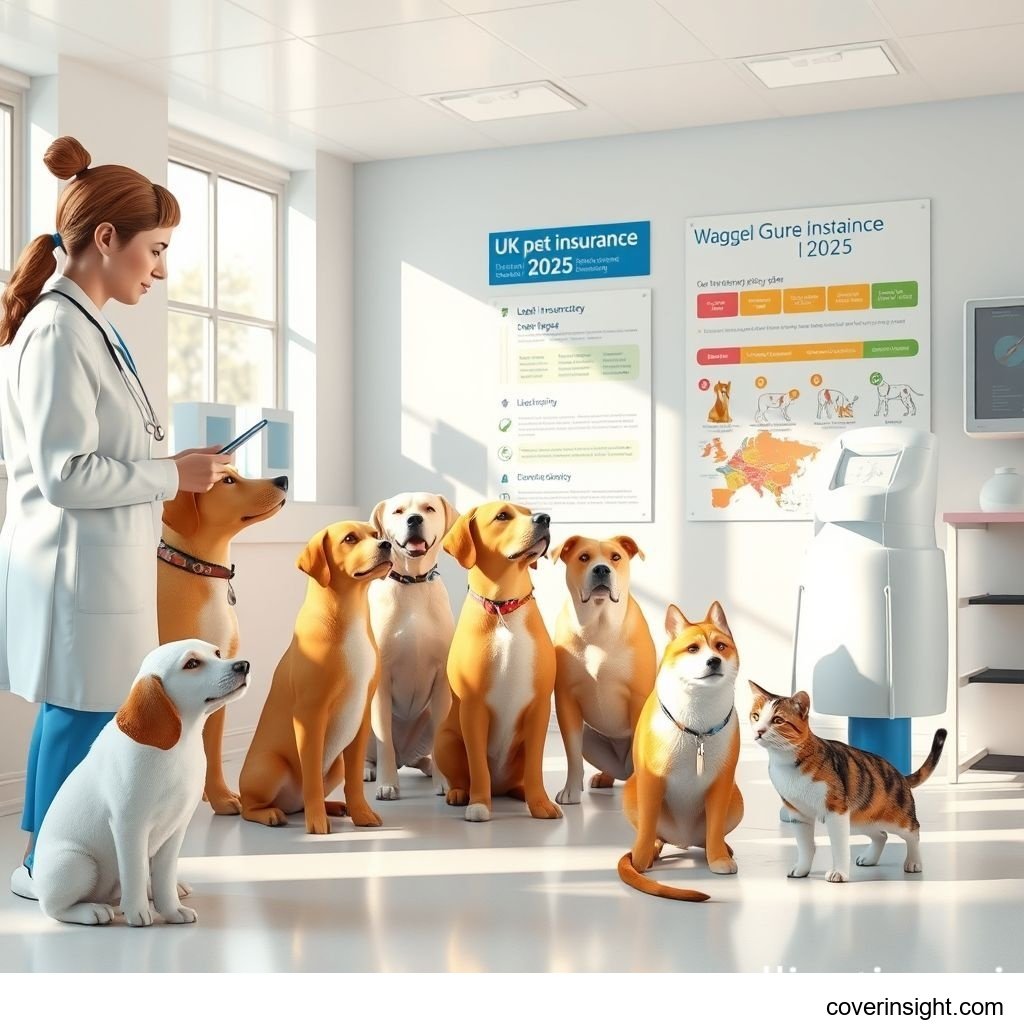Introduction
In the intricate landscape of Great British commerce, safeguarding a business against unforeseen risks is paramount. For companies operating across various sectors, understanding the product liability insurance meaning is not just an option but a critical necessity for 2025. This essential guide aims to demystify what this vital coverage entails, why it’s indispensable, and how businesses can secure comprehensive protection. It shields businesses from the financial repercussions of claims arising from injuries or damages caused by their products, ensuring stability and operational continuity.
Coverage Details
Understanding what liability insurance covers is fundamental to securing adequate protection for your business. Product liability insurance is designed to protect businesses from claims that their products caused injury or damage.
What’s Included
Typically, a robust product liability insurance policy in GB includes coverage for:
-
Bodily Injury: This covers costs if a defect in your product causes physical harm or illness to a consumer. For instance, if a faulty appliance sparks a fire leading to burns, or contaminated food causes severe food poisoning, this aspect of your product liability insurance meaning would come into play.
-
Property Damage: If your product causes damage to someone else's property, this component covers the repair or replacement costs. An example might be a defective electronic device that short-circuits and damages a customer's home or equipment.
-
Legal Defence Costs: Even if a claim is ultimately unfounded, the legal costs associated with defending your business can be substantial. Product liability insurance covers these defence expenditures, including lawyer fees, court costs, and settlements or awards, regardless of whether you are found liable.
-
Recall Expense (Optional): Some policies offer an extension to cover the costs associated with product recalls, such as notification expenses, logistics, and disposal. This is increasingly important given the high cost and reputational damage of recalls.
Common Exclusions
While comprehensive, product liability insurance does have its limitations. Common exclusions that highlight specific aspects of the product liability insurance meaning often include:
-
Intentional Damage: Deliberate acts of negligence or malice are typically not covered.
-
Professional Negligence: This specific type of claim usually requires a separate Professional Indemnity insurance policy, as it relates to advice or services rather than the product itself.
-
Contractual Liabilities: Claims arising solely from breach of contract, rather than a defect in the product causing injury or damage, are generally excluded.
-
Pre-Existing Known Defects: If a defect was known before the policy inception or before the product was sold, it might not be covered.
-
Acts of War or Terrorism: These events are almost universally excluded from standard insurance policies.
-
Damages to Your Own Products: This insurance covers damage to others caused by your product, not damage to the product itself.
Cost Analysis
The cost of product liability insurance varies significantly. Understanding the factors that influence premiums is key to effective budgeting and ensuring you get the right product liability insurance meaning for your budget.
Price Factors
Several elements contribute to the overall premium for product liability insurance:
-
Industry and Product Type: High-risk industries (e.g., pharmaceuticals, automotive parts, food & beverage) typically face higher premiums due to the greater potential for serious claims. The inherent risk profile of your product plays a huge role.
-
Sales Volume and Revenue: Businesses with higher sales volumes or revenue generally have a greater exposure to potential claims, leading to higher premiums. More products in the market mean more potential incidents.
-
Claims History: A history of previous product liability claims will almost certainly increase your premium, as it signals a higher risk to insurers.
-
Safety Protocols and Quality Control: Businesses with robust quality control measures, certifications, and strong safety records may qualify for lower premiums. Demonstrating a commitment to safety can significantly reduce perceived risk.
-
Coverage Limits and Deductibles: Higher coverage limits naturally lead to higher premiums, while choosing a higher deductible (the amount you pay before the insurance kicks in) can reduce your premium.
-
Geographic Reach: If your products are sold internationally, especially in litigious markets like the USA, your premiums will be higher than if you only sell within GB.
Saving Tips
Businesses can implement several strategies to reduce their product liability insurance premiums without compromising essential coverage:
-
Implement Stringent Quality Control: Proactive measures to prevent defects are your best defence. This includes rigorous testing, clear manufacturing processes, and regular audits.
-
Conduct Regular Risk Assessments: Identifying and mitigating potential hazards before they lead to incidents can significantly reduce your risk profile. This demonstrates a proactive approach to risk management.
-
Bundle Policies: Many insurers offer discounts for bundling multiple insurance policies, such as general liability, property, and product liability, under one provider.
-
Compare Quotes: Never settle for the first quote. Obtain multiple quotes from different reputable insurers to ensure you are getting the most competitive price for the comprehensive product liability insurance meaning you require.
-
Increase Your Excess/Deductible: If your business has the financial capacity to absorb a higher initial cost per claim, opting for a higher excess can lower your annual premium.
-
Maintain Excellent Records: Detailed records of your product development, testing, manufacturing, and distribution processes can be crucial in defending against claims and demonstrating due diligence, potentially lowering future premiums.
Who Needs Product Liability Insurance?
The comprehensive product liability insurance meaning extends beyond just the manufacturer. Any entity involved in the supply chain of a product can be held liable for defects.
Broad Scope of Liability
-
Manufacturers: The primary party responsible, whether they make the finished product or component parts.
-
Distributors: Companies that handle and distribute products from manufacturers to retailers.
-
Retailers: Even if they don't manufacture, retailers can be held liable for selling a defective product.
-
Importers: Businesses that bring products from outside GB into the domestic market. They often bear the same liability as manufacturers for imported goods.
-
Wholesalers: Those who sell goods in bulk to retailers.
This broad scope means that understanding what liability insurance covers across the entire supply chain is crucial. For example, if a small independent shop imports artisanal goods from abroad, they effectively become the 'manufacturer' in the eyes of GB law for product liability purposes.
Industry-Specific Needs
Certain industries face a higher inherent risk profile and thus have a more pressing need for robust product liability insurance meaning:
-
Food and Beverage: Risk of contamination, allergic reactions, or foreign objects.
-
Electronics and Appliances: Risk of fire, electric shock, or malfunction.
-
Toys and Children's Products: Risk of choking hazards, toxic materials, or design flaws.
-
Pharmaceuticals and Medical Devices: Risk of adverse reactions, device malfunction, or incorrect dosages, with potentially severe consequences.
-
Automotive Parts: Risk of mechanical failure leading to accidents.
Understanding GB's Legal Landscape (2025)
The legal framework in Great Britain for product liability is primarily governed by the Consumer Protection Act 1987. Grasping this context is essential to fully appreciate the product liability insurance meaning for businesses operating here.
Strict Liability Principle
Under the Consumer Protection Act 1987, GB operates on a principle of 'strict liability'. This means that a producer (which includes manufacturers, importers, and sometimes retailers) can be held liable for damage caused by a defective product, regardless of whether they were negligent. The claimant only needs to prove:
- There was a defect in the product.
- They suffered damage.
- The damage was caused by the defect.
This 'no-fault' liability dramatically increases the importance of comprehensive product liability insurance. Unlike negligence claims, where intent or oversight must be proven, strict liability focuses solely on the product's defect and its consequences. This is a crucial element of what liability insurance covers in the GB context.
Regulatory Environment
In 2025, GB's regulatory landscape continues to evolve post-Brexit. While the Consumer Protection Act remains central, businesses must stay updated on potential divergence or alignment with EU product safety directives. The UKCA marking (replacing CE marking in many instances) and new regulations regarding online sales further shape the risk environment. Ensuring compliance with these regulations is not only a legal obligation but also a vital step in mitigating risks that would otherwise lead to claims, potentially impacting discussions around trustee liability coverage for directors overseeing product safety.
Companies are encouraged to consult official sources like the Financial Conduct Authority and the Association of British Insurers for the latest regulatory guidance and industry best practices.
Choosing the Right Policy
Selecting the appropriate product liability insurance policy is a strategic decision that requires careful consideration of your business's unique risk profile and operational scale. It goes beyond merely understanding the product liability insurance meaning.
Key Considerations for Selection
When evaluating different policies, focus on these critical aspects:
-
Coverage Limits: Ensure the financial limits of the policy are sufficient to cover potential worst-case scenarios, factoring in legal costs, potential settlements, and awards. Under-insurance can be as detrimental as no insurance.
-
Worldwide Coverage: If your products are sold globally, especially to markets like the USA or Canada known for their litigious environments, ensure your policy offers appropriate worldwide coverage (often excluding North America unless specifically added).
-
Retroactive Date: For 'claims-made' policies, ensure the retroactive date covers all products you have ever sold, even those from years ago. This is crucial for long-tail liabilities.
-
Deductibles/Excess: Balance a lower premium with an affordable deductible that your business can comfortably manage in the event of a claim.
-
Insurers' Reputation and Expertise: Choose an insurer with a strong financial rating and proven expertise in product liability, especially within your specific industry.
-
Policy Extensions: Consider valuable add-ons such as recall expense coverage, errors and omissions (if applicable to your product/service), or professional indemnity.
When reviewing options, it's vital to clearly understand what liability insurance covers for your specific business activities. Directors and officers should also consider how robust product liability frameworks can indirectly support their trustee liability coverage, by reducing the likelihood of negligence claims related to product safety oversight.
FAQs
Navigating the complexities of product liability insurance often leads to common questions. Here, we address some of the most frequently asked queries concerning the product liability insurance meaning and its implications for GB businesses.
How much does product liability insurance meaning cost?
The cost of product liability insurance varies widely, typically ranging from a few hundred pounds annually for small businesses with low-risk products to tens of thousands for larger enterprises in high-risk sectors. Factors influencing the premium include your industry, product type, sales volume, claims history, chosen coverage limits, and the efficacy of your internal safety protocols. For a precise figure, obtaining a tailored quote based on your specific business profile is essential.
What affects premiums?
Premiums are influenced by several key factors:
-
Product Risk: The inherent danger associated with your product (e.g., food vs. stationery).
-
Sales Turnover: Higher sales generally mean higher risk exposure.
-
Claims History: Past claims indicate a higher future risk.
-
Quality Control: Robust internal processes can demonstrate lower risk.
-
Geographic Reach: Selling internationally, particularly in litigious countries, increases costs.
-
Coverage Limits: The maximum amount the policy will pay out.
-
Deductible/Excess: The amount you pay before the insurer does.
Is product liability insurance mandatory in GB?
Product liability insurance is not legally mandatory for all businesses in Great Britain. However, while not a universal legal requirement, it is often a contractual obligation, especially when dealing with larger retailers or distributors who require their suppliers to hold adequate coverage. More importantly, it is a commercial necessity due to the strict liability laws. Operating without it leaves your business severely exposed to potentially crippling financial claims that can arise even without proven negligence.
How to choose the best product liability insurance for my business?
Choosing the best policy involves a multi-faceted approach. First, conduct a thorough risk assessment of your products and operations to understand your specific exposures. Second, determine appropriate coverage limits based on potential damages. Third, compare quotes from multiple insurers, focusing not just on price but on policy terms, exclusions, and the insurer's reputation. Finally, consider partnering with an experienced insurance broker who can provide expert advice and help tailor a policy that clearly defines what liability insurance covers for your unique needs, ensuring all critical aspects, including potential implications for trustee liability coverage, are considered.
What are the consequences of not having product liability coverage?
Operating without adequate product liability coverage in GB can lead to severe, potentially catastrophic, consequences for a business. These include:
-
Significant Financial Loss: Covering legal defence costs, settlements, and damages directly from business assets, which can quickly deplete capital.
-
Bankruptcy: For smaller businesses, a single large claim can lead to insolvency and closure.
-
Reputational Damage: Negative publicity from product-related incidents, exacerbated by an inability to compensate victims, can severely harm brand image and consumer trust.
-
Loss of Contracts: Many retailers and distributors will not engage with suppliers who lack this crucial insurance, limiting market access.
-
Personal Liability: In some cases, directors or business owners might face personal financial exposure, particularly if a lack of corporate insurance is linked to negligence regarding product safety.
Investing in comprehensive product liability insurance is a strategic business decision that protects your finances, reputation, and long-term viability in the competitive GB market of 2025.








Comments